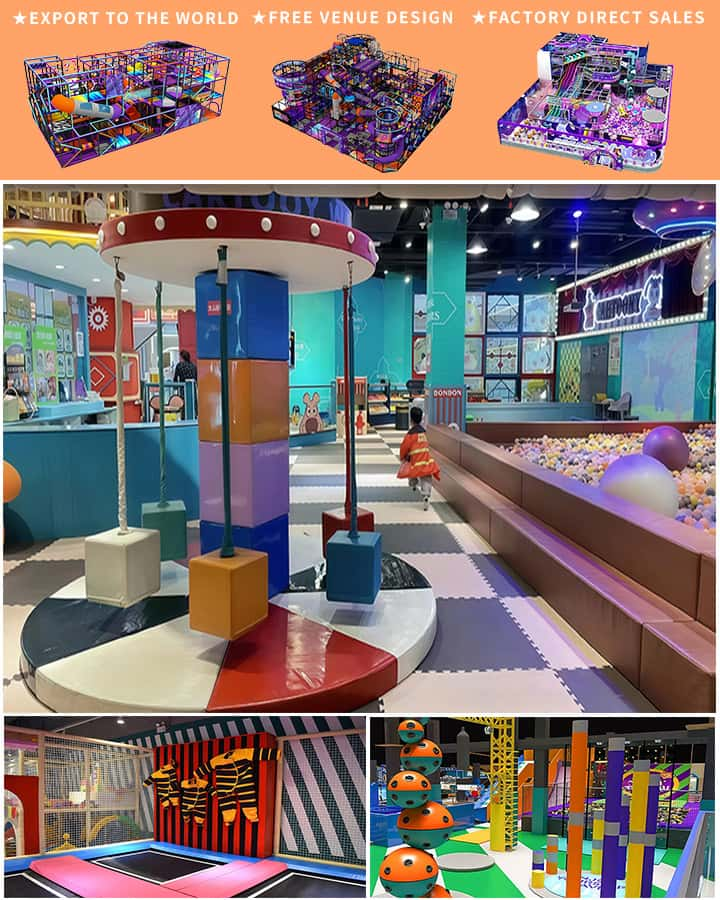Selecting the right playground equipment for preschoolers is crucial for fostering their physical development, enhancing social skills, and ensuring their overall well-being. Preschool-aged children are in a critical stage of growth and learning, and well-designed playgrounds can significantly contribute to their developmental milestones. Here’s an overview of some key considerations to keep in mind when choosing playground equipment for this age group.
Safety First
Safety is paramount when it comes to preschool-aged children. Ensure that all playground equipment is designed with safety features such as soft landing surfaces, rounded edges, and smooth textures to prevent injuries. Look for materials that are durable, non-toxic, and easy to clean to maintain a hygienic environment. Additionally, playground structures should have proper fall zones free of obstacles like rocks or roots.
Age-Appropriate Design
Preschoolers have different needs compared to older children or adults. Equipment should be designed to match their physical capabilities and cognitive levels. For instance, climbers with wide bases and low heights are perfect for little ones, while swings with bucket seats offer both fun and security. Slides should be gentle and not too steep, encouraging enjoyment without causing fear.
Educational Value
The best playground equipment goes beyond just physical activity; it also supports educational goals. Interactive elements such as musical instruments, sensory panels, and puzzles integrated into play structures stimulate cognitive development and creativity. For example, sandboxes with various tools encourage exploration and fine motor skills, while water tables introduce basic scientific concepts.

Social Interaction
Playgrounds are social environments where children learn to interact, share, and collaborate. Consider equipment that promotes group play and socialization like seesaws, merry-go-rounds, and cooperative climbing structures. These activities teach essential life skills like teamwork, turn-taking, and communication.
Inclusive Play Options
Inclusivity is an important aspect of modern playground design. Ensure that the equipment accommodates children of all abilities by incorporating wheelchair-accessible swings, transfer stations, and adaptive play elements. This not only provides opportunities for all children to play together but also fosters empathy and understanding among young minds.
Durability and Maintenance
High-quality playground equipment should withstand heavy use and harsh weather conditions. Invest in sturdy construction and weather-resistant materials that require minimal maintenance. Regular inspections and timely repairs will extend the lifespan of the equipment and ensure ongoing safety for users.
Flexibility and Versatility
Children’s interests and abilities evolve rapidly, so choose versatile equipment that can be adapted as they grow. Modular systems allow for rearrangement and expansion, making it easy to update the playground without significant expense. Look for multi-purpose structures that can support various activities, from climbing to imaginative play.
Environmental Considerations
Incorporating eco-friendly elements into playground design can enhance the natural appeal and sustainability of the area. Use recycled materials, plant native vegetation, and integrate natural features like logs or boulders. Such additions not only create a visually pleasing environment but also offer diverse sensory experiences.
Engaging Colors and Themes
Bright colors and engaging themes capture the attention of preschoolers and make the playground more inviting. Choose vibrant hues that stimulate visual interest and consider themed areas like jungles, pirate ships, or fairy tales to inspire imaginative play.
Community Involvement
Finally, involve the community in the planning and selection process. Gather feedback from parents, teachers, and even young children to understand their needs and preferences. Community involvement ensures that the playground will be well-utilized and appreciated by its users.
In conclusion, selecting the right playground equipment for preschoolers requires careful consideration of safety, developmental appropriateness, educational value, social interaction, inclusivity, durability, flexibility, environmental impact, aesthetic appeal, and community input. By focusing on these aspects, you can create a stimulating and safe outdoor play environment that supports the healthy growth and development of young children.




